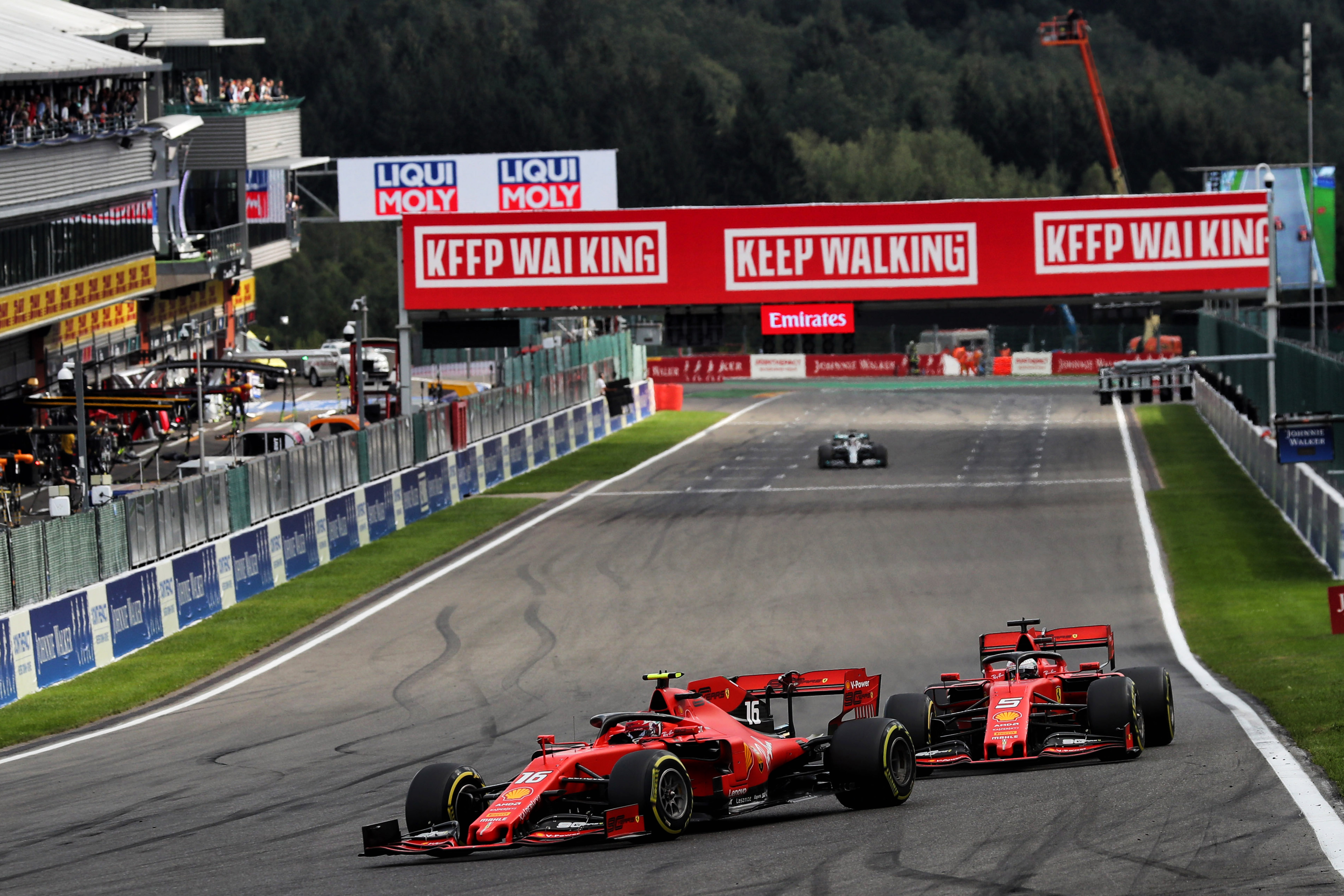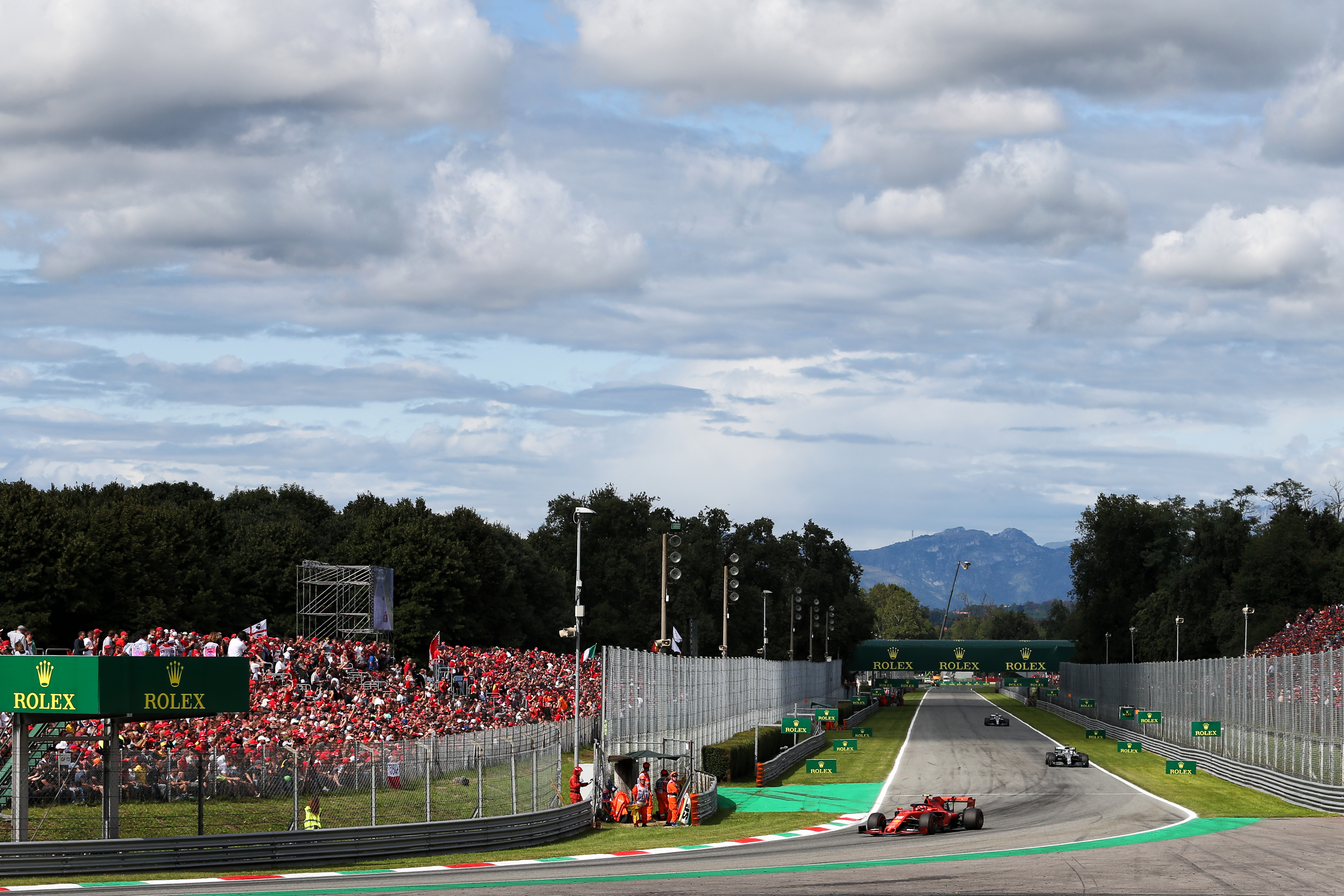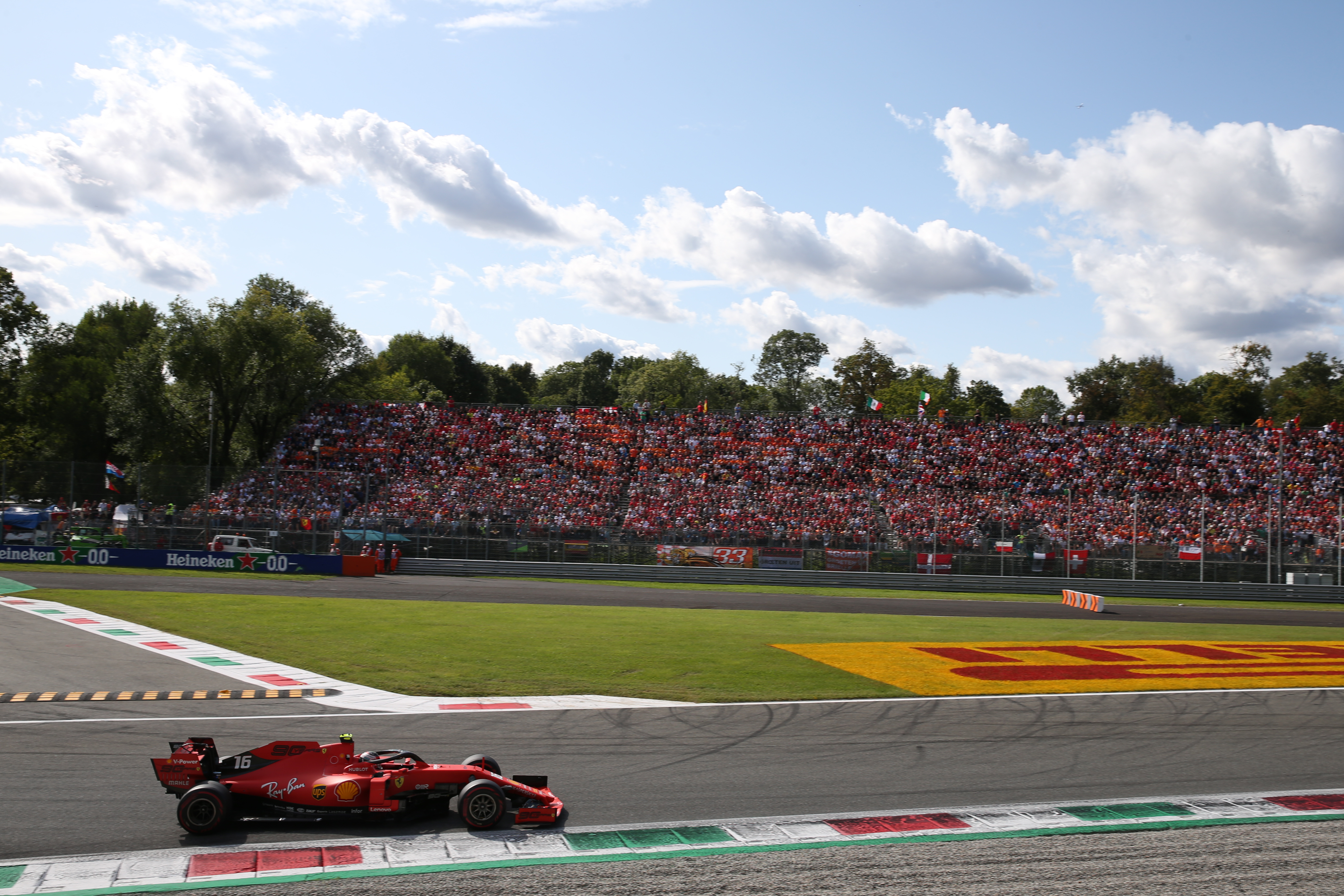It was at this time last year – in the Spa/Monza double-header – that rivals’ suspicions about Ferrari’s power advantage really intensified. It was only partly that Ferrari had measurably more power than the next-best engine (around 25bhp more in qualifying).
It was the peculiar difference in pattern of that performance between Spa and Monza that elevated the matter from regular rivals’ competitive paranoia to something that demanded a full investigation.
The crucial difference between Spa and Monza last year was that at Spa Ferrari was taking 1.1s out of Mercedes down the straights, with Mercedes only clawing 0.4s of that back through the downforce-demanding middle sector, leaving Charles Leclerc on pole by 0.7s.
That, on its own, was not so difficult to fathom. The Ferrari lacked the Merc’s downforce as it was a lower-drag car by concept. Couple that with a power advantage and the pattern was explainable on this outlier of a circuit.
Logically, that advantage should only have increased at Monza which places even more emphasis on that straightline performance – only without the pesky inconvenience of a very downforce-demanding middle sector. The Lesmos and Parabolica reward downforce but form a much smaller proportion of the lap than Spa’s sector two. So surely with that drag and power advantage, the Ferrari would be even further clear, right?

Except that’s not what happened at all. Ferrari only just scraped pole at Monza, with Leclerc mere hundredths ahead of Lewis Hamilton’s Mercedes. That closeness continued in the race too with Leclerc seeing off very hard challenges from Hamilton first and subsequently Valtteri Bottas.
That unusual pattern was actually partly explainable. Mercedes knew that part of Ferrari’s big Spa qualifying advantage was down to Mercedes’s under-performance. Mercedes was in a set-up quandary and never did get the car quick through the Bus Stop and La Source. By contrast, it found its sweet spot very nicely at Monza.
But that was info privy only to Mercedes at the time. In the meantime it got others theorising about how such an anomalous pattern might occur – and fuel flow became the focus. Because if you were somehow getting around the fuel flow limit, you couldn’t use it all the time without needing way more than the regulation 110kg. So you’d use it where it would bring the most lap time – out of the corners before the squaring force of drag made it less effective. The Ferrari’s acceleration out of Parabolica was indeed quite startling (as shown below).
Qualifying at Monza, 2019
| Parabolica exit (km/h) | Speed trap (km/h) | |
| Ferrari | 321.8 | 349.7 (+27.9km/h) |
| Mercedes | 321.1 | 338.3 (+17.2km/h |
But it wouldn’t be so effective over a lap as at Spa because there are far fewer corners. Monza would only give you the top end power/low drag benefit but not the repeated accelerations.
It was so far ahead at Spa, it was theorised, because that track gave Ferrari both sets of benefits and Monza only one of them. That might be consistent with how those two circuits would compare with a car that was breaching the fuel flow regulation.
Gaming of the fuel flow meter, sending it false signals, would allow that limit to be breached, it was theorised. But doing that had been made very difficult by the stipulation made early last year that the pre-race fuel load must be declared.

That way, any difference between what was declared and what was there post-race should tally with the inferred amount used by the fuel flow meter (any false signals could only be small deviations without being obvious).
One possible way of getting around that difficulty would be to miscalibrate your measuring equipment – so that it would show less than you were actually putting in. So a spot check was made of Ferrari’s declared fuel load at Abu Dhabi – and it was found to be under-declared by almost 5kg.
That still wasn’t proof that Ferrari had breached the fuel flow limit. And neither could that proof be found by the FIA when it made its investigation.

But a series of technical directives have been made on the assumption that this indeed was what had been happening, and since then Ferrari’s power has dropped substantially. Which is at the root of its awful current problems.
Having been on an aerodynamic development programme based around the power it had rather than what they now have, Ferrari’s car is too high on drag for its power level. It doesn’t have enough power to afford it the downforce it is producing.
So ironically, Spa and Monza – the venues of its two shining victories last year – are this time around the tracks that show the car at its very worst.


